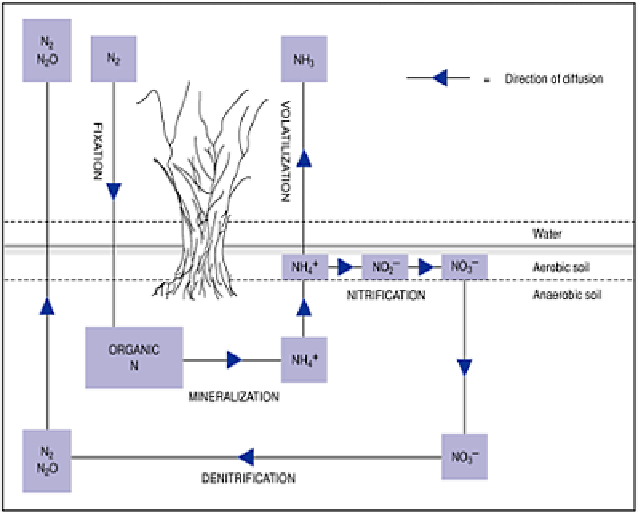Environmental Engineering Reference
In-Depth Information
Figure 19.11
The nitrogen cycle in a flooded rice paddy.
atmosphere. The two most commonly used fertilizers are ammonium sulphate and urea;
these are placed in the anaerobic layer to prevent the oxidation of ammonium ions to
nitrates, thereby reducing losses by denitrification.
In temperate regions gleyed soils are of two main types. Surface-water gleys result
from drainage being restricted by a slowly permeable subsoil; they are also known as
stagnogleys
. In upland locations with high rainfall a peaty surface can form to give a
stagnohumic gley soil (Figure 19.12). On permeable parent materials, gleys will form
only in topographic hollows and at low points in the landscape under the influence of
ground water (Figure 19.13). These are classed as groundwater gleys. As a group, gley
soils can have a wide range of pH values, being acid, alkaline or even calcareous. The pH
and base status is mainly determined by the acidity and basicity of the parent material.
Groundwater gleys tend to have higher pH values owing to the low-lying sites receiving
bases washed in from surrounding slopes (see Colour Plate 19 between pp. 400 and 401).
SALINIZATION, ALKALIZATION, SOLODIZATION
Under arid and semi-arid conditions, leaching of the soil profile is very weak. In normal
desert soils it is still sufficient to remove soluble salts, though the less soluble gypsum
(CaSO
4
. 2H
2
O) and lime (CaCO
3
) accumulate as distinctive layers (By and Bk horizons).
If, however, there is a higher input of soluble salts into the soil, leaching may not be
sufficiently powerful to remove them and they accumulate, usually as a salt-enriched

